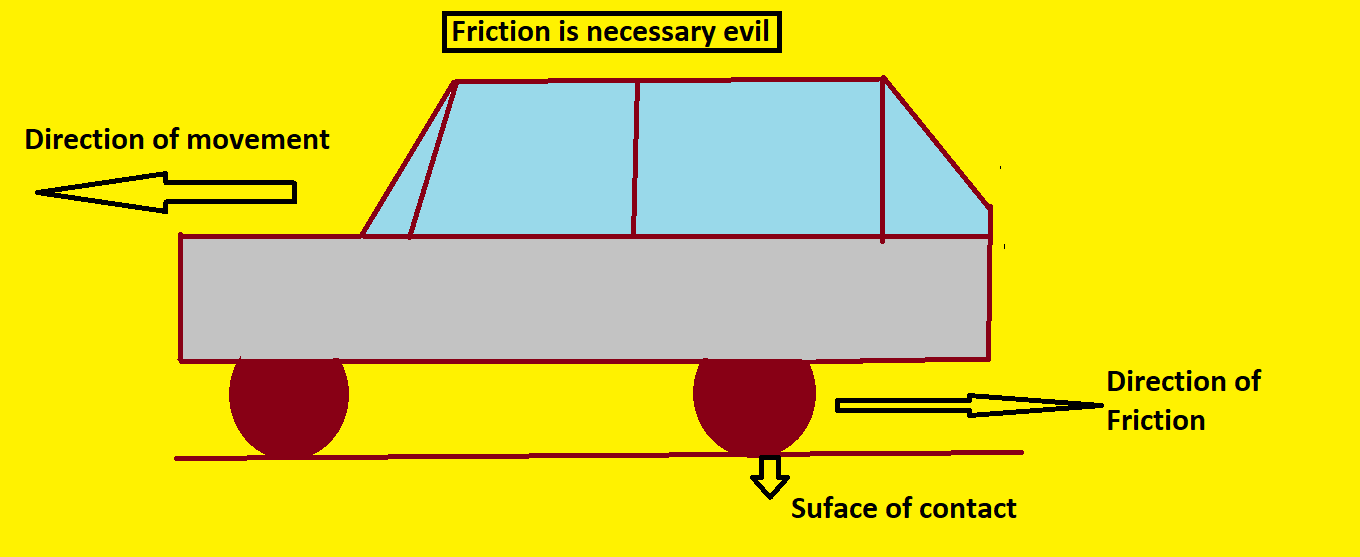What is Friction?
When a body slides or rolls over another body or on a surface, then force opposing the motion between those surface of the body which is in contact and work against the motion is called Frictional Force which will be parallel to the surface in contact.
Applications-
- Friction also works between our feet and surface of walking, without friction, we can not walk at all. So, friction is necessary for us to walk and it works against our direction of motion.
- This is also the reason for earthquakes when the forces causing the rocks to slide exceed the force of friction, the rock will start to move and release a great amount of energy causing the earthquake, that shake the part of the earth.
-We Can not drive a car without friction between tyres and road, tyres move forward and friction works backwards lead to move the tyre in forwarding direction and car moves. But snowy surface does not provide enough friction to move and make it hard to control for the driver.
- Friction is also necessary for writing on a blackboard or on paper.
- No two body will stick to each other if there is no friction.
- Brakes of vehicles will not work without friction.
- Nuts and bolts for holding the parts of the machinery together will not work without friction.
- Walking will not be possible without friction.
- Friction is evil is some cases;
- Frictional forces result in the production of heat, which causes damage to the machinery.
- Friction causes wear and tear of the parts of the machinery in contact, thus their lifetime reduce.
Methods of reducing friction-
1. By Polishing- The surface can be made smoother, therefore friction reduces.
2. Lubricants- Like oil, grease etc. fill up the irregularities of the surfaces, making them smoother. Hence, friction decreases.
3. Ball Bearings- To reduce the wear and tear and energy loss against friction, small steel balls are kept between rotating part of machines which are known as ball bearings. In a ball bearing system, one part moves with respect to others, the balls roll on between two parts. No kinetic friction is involved and rolling friction is very small, causes much energy loss.






Comments
Post a Comment